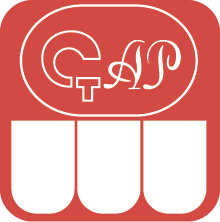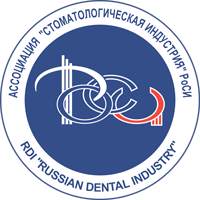DOI:
10.37988/1811-153X_2025_1_66Dentists’ awareness about methods of diagnosis and treatment of temporomandibular disorders
Downloads
Abstract
The prevalence of patients with signs and symptoms of temporomandibular disorders (TMD) at dental appointments is quite high. Dentists’ knowledge of the etiology, clinical manifestations, diagnostic and treatment methods of this pathology contribute to early detection and effective treatment of TMD. Aim — to study the awareness of dentists of the Udmurt Republic of the signs and symptoms, diagnosis and management of TMD.Materials and methods.
An anonymous survey of 232 dentists of the Udmurt Republic of various specialties was conducted. The questionnaire included 20 questions concerning the prevalence, etiology, clinical signs and symptoms, diagnostic and treatment methods for patients with TMD, and the need of dentists for additional education in TMD.
Results.
37.1% of dentists answered that the frequency of patients with signs of TMD at their reception is from 10 to 20%. At the same time, questions to identify TMD are asked by 56.5% of dentists. Only 10.3% of dentists identified all the clinical symptoms characterizing this pathology. 32.3% of dentists noted all possible etiological factors of TMD. Palpation of the maxillofacial region and determination of the degree of mouth opening are performed by 44.0% and 46.6% of dentists, respectively. Treatment of this category of patients is carried out by 12.5% of doctors, mainly dental surgeons. The most frequently prescribed are pharmacotherapy (75.9%), physiotherapy methods (69.0%) and selective grinding (58.6%). The average score of knowledge of anatomy and biomechanics of the dental system of all participants according to the results of self-assessment was 2.78±0.19 on a five-point scale. 81% of dentists would like to improve their knowledge in TMD.
Conclusion.
The survey revealed an insufficient level of knowledge among dentists of all specialties about the signs and symptoms, methods of diagnosis and treatment of TMD. There is a high need to continuing education in the diagnosis and management of TMD among dentists.
Key words:
temporomandibular disorder, awareness, dentistsFor Citation
[1]
Golovatenko O.V., Strakh O.O., Tarasova Ju.G., Metelitsa S.I., Khvatova M.D. Dentists’ awareness about methods of diagnosis and treatment of temporomandibular disorders. Clinical Dentistry (Russia). 2025; 28 (1): 66—70. DOI: 10.37988/1811-153X_2025_1_66
References
- Committee on temporomandibular disorders (TMDs): From research discoveries to clinical treatment; Board on Health Sciences Policy; Board on Health Care Services; Health and Medicine Division Temporomandibular disorders: Priorities for research and care. A consensus study report of National Academies of Sciences, Engineering, and Medicine. Washington (DC): The National Academies Press, 2020. 426 p. DOI: 10.17226/25652
- Valesan L.F., Da-Cas C.D., Réus J.C., Denardin A.C.S., Garanhani R.R., Bonotto D., Januzzi E., de Souza B.D.M. Prevalence of temporomandibular joint disorders: a systematic review and meta-analysis. Clin Oral Investig. 2021; 25 (2): 441—453. PMID: 33409693
- Okeson J.P., Perez C., Fricton J.R. Temporomandibular joint disorders. In: Ferreira J.N.A.R., Fricton J., Rhodus N. (eds.) Orofacial disorders. Springer, 2017. Pp. 145—157. DOI: 10.1007/978-3-319-51508-3_14
- Golovatenko O.V., Shevkunova N.A., Gasnikov I.I. Risk factors for temporomandibular disorders in young people. Aspirantskiy Vestnik Povolzhiya. 2022; 1: 23—27 (In Russian). eLIBRARY ID: 49594013
- Hoffmann R.G., Kotchen J.M., Kotchen T.A., Cowley T., Dasgupta M., Cowley A.W. Jr Temporomandibular disorders and associated clinical comorbidities. Clin J Pain. 2011; 27 (3): 268—74. PMID: 21178593
- de Kanter R., Battistuzzi P., Truin G.J. Temporomandibular Disorders: «Occlusion» Matters! — Pain Res Manag. 2018; 2018: 8746858. PMID: 29861806
- Fillingim R.B., Ohrbach R., Greenspan J.D., Knott C., Diatchenko L., Dubner R., Bair E., Baraian C., Mack N., Slade G.D., Maixner W. Psychological factors associated with development of TMD: the OPPERA prospective cohort study. J Pain. 2013; 14 (12 Suppl): T75—90. PMID: 24275225
- Fricton J. Temporomandibular disorders: A human systems approach. Journal of the California Dental Association. 2014; 42 (8): 523—535. DOI: 10.1080/19424396.2014.12221399
- Lindfors E., Tegelberg Å., Magnusson T., Ernberg M. Treatment of temporomandibular disorders — knowledge, attitudes and clinical experience among general practising dentists in Sweden. Acta Odontol Scand. 2016; 74 (6): 460—5. PMID: 27327618
- Mozhdeh M., Caroccia F., Moscagiuri F., Festa F., D’Attilio M. Evaluation of knowledge among dentists on symptoms and treatments of temporomandibular disorders in Italy. Int J Environ Res Public Health. 2020; 17 (23): 8760. PMID: 33255732
Downloads
Received
May 20, 2024
Accepted
February 9, 2025
Published on
April 7, 2025









